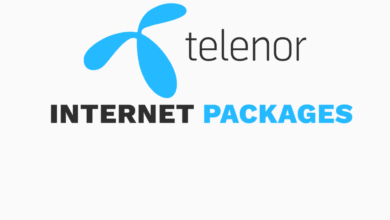
The rise of virtual education through Metaverse platforms is revolutionizing the way knowledge is shared and absorbed, merging cutting-edge technology with immersive learning experiences. Unlike traditional online classes, which often rely on passive video lectures, the Metaverse creates interactive 3D environments where students can engage with lessons in real time using virtual reality (VR), augmented reality (AR), and blockchain-based systems. This shift not only enhances engagement but also breaks down geographical barriers, making high-quality education accessible to learners worldwide. As schools, universities, and corporations adopt these platforms, the future of education is becoming more dynamic, personalized, and boundaryless.
The integration of virtual education through Metaverse platforms goes beyond replicating physical classrooms it introduces entirely new ways of learning. Students can explore historical events through lifelike simulations, conduct virtual science experiments, or collaborate with peers across the globe as digital avatars. AI-powered tutors provide instant feedback, while gamification keeps learners motivated. However, challenges such as accessibility, data privacy, and digital literacy must be addressed to ensure equitable adoption. As the Metaverse continues to evolve, it promises to redefine education, making it more interactive, inclusive, and adaptable to the needs of tomorrow’s learners.
The Rise of Virtual Education Through Metaverse Platforms
The Evolution of Virtual Education
Education has always evolved alongside technological advancements, from the printing press to online learning platforms. The introduction of the Metaverse marks the next significant leap, offering a fully immersive 3D learning environment. Unlike traditional e-learning, which relies on video lectures and static content, Metaverse-based education enables students to interact with digital objects, participate in virtual labs, and engage in lifelike simulations. Universities like Stanford and MIT have already begun experimenting with virtual campuses, while K-12 institutions are using VR to make subjects like history and science more engaging.
How Metaverse Platforms Enhance Learning
One of the most significant advantages of Metaverse platforms is their ability to provide experiential learning. For instance, medical students can practice surgeries in a risk-free virtual environment, while engineering students can manipulate 3D models of complex machinery. Social interaction is another key benefit—avatars allow students and teachers to communicate naturally, fostering collaboration and teamwork. Additionally, AI-driven tutors within the Metaverse can offer personalized learning paths, adapting to each student’s pace and style. Gamification elements, such as rewards and interactive challenges, further increase motivation and retention rates.
Accessibility and Global Reach
The Metaverse eliminates geographical constraints, allowing students from remote areas to access high-quality education without relocation. Language barriers are also reduced through real-time translation features, making education more inclusive. Furthermore, students with physical disabilities can participate in ways that traditional classrooms may not accommodate, such as virtual field trips or hands-on experiments that would otherwise be inaccessible. However, the digital divide remains a challenge, as not all students have access to Virtual Reality headsets or high-speed internet. Policymakers and tech companies must work together to bridge this gap for equitable learning opportunities.
Challenges and Ethical Considerations
Despite its potential, the integration of Metaverse platforms in education raises several concerns. Privacy and data security are critical issues, as virtual environments collect vast amounts of user data. There is also the risk of increased screen time leading to digital fatigue and social isolation. Additionally, the cost of VR equipment and the need for technical expertise may limit widespread adoption. Educators must also adapt to new teaching methodologies, requiring extensive training. Addressing these challenges will be essential to ensure that virtual education remains effective and sustainable.
The Future of Education in the Metaverse
Immersive Learning Environments Replace Traditional Classrooms
The Metaverse will transform passive learning into active participation through 3D virtual classrooms. Students will no longer watch lectures but interact with holographic tutors, manipulate 3D models of DNA strands, or walk through ancient Rome in real-time. Universities like Stanford and Harvard are already testing VR campuses where avatars attend seminars. This shift from flat screens to immersive worlds will make education more engaging and memorable.
AI-Powered Personalized Education for Every Student
Adaptive learning algorithms in the Metaverse will analyze student performance in real-time, adjusting lesson difficulty and teaching styles instantly. A struggling math student might receive interactive visual aids, while an advanced peer gets challenging simulations. These AI tutors will be available 24/7, eliminating the one-size-fits-all model and letting students learn at their optimal pace.
Global Classrooms Without Borders
Geography will no longer limit education when students in Tokyo, Nairobi, and Buenos Aires share a virtual lab. Language barriers will dissolve with real-time translation AIs, while cultural exchange becomes part of daily lessons. Imagine history classes where students interview Holocaust survivors via lifelike VR recreations or collaborate with NASA scientists in zero-gravity physics experiments.
Hands-On Training Through Hyper-Realistic Simulations
Medical students will perform virtual surgeries with haptic feedback gloves, engineering trainees will disassemble jet engines, and chemistry labs will simulate explosive reactions risk-free. These low-cost, repeatable simulations will bridge the gap between theory and practice better than textbooks or videos ever could especially for vocational and STEM fields.
Gamification Boosts Engagement & Retention
Learning will become an adventure where students earn badges for mastering algebra quests or team up to solve climate-change puzzles. Role-playing historical events (like debating as UN diplomats) or competing in science challenges will trigger dopamine-driven motivation, making education feel less like work and more like an engaging game.
Read More: How Pakistani Artists Can Sell in the Metaverse
Conclusion
The rise of virtual education through Metaverse platforms marks a transformative shift in the global learning landscape, offering unprecedented opportunities for immersive and interactive education. By breaking down geographical barriers and enabling experiential learning through VR and AR, the Metaverse has the potential to make Virtual Education more engaging, personalized, and accessible than ever before. However, realizing this potential requires addressing critical challenges, including the digital divide, data security concerns, and the need for educator training. As technology continues to evolve, collaboration between policymakers, educators, and tech developers will be essential in shaping an inclusive and effective virtual learning ecosystem.
Ultimately, virtual education through Metaverse platforms is not just a futuristic concept it is rapidly becoming a tangible reality that could redefine how knowledge is acquired and shared. While traditional classrooms will likely remain relevant, the integration of the Metaverse promises a hybrid model where physical and virtual learning coexist seamlessly. By embracing this innovation responsibly, we can unlock new possibilities for lifelong learning, workforce training, and global education equity. The journey has just begun, and the future of Virtual Education in the Metaverse holds limitless potential for learners around the world.
FAQs
What is the Metaverse in Virtual Education?
The Metaverse in Virtual Education refers to immersive virtual environments where students and teachers interact using VR, AR, and AI to create engaging and interactive learning experiences.
How does the Metaverse improve learning?
It enhances learning through hands-on simulations, personalized AI tutors, global collaboration, and gamified experiences that increase engagement and retention.
What are the challenges of Metaverse-based Virtual Education?
Key challenges include high costs of VR equipment, data privacy concerns, the digital divide, and the need for teacher training in virtual instruction.
Can the Metaverse replace traditional classrooms?
While it may not fully replace physical classrooms, it can complement them by offering hybrid models that combine the best of both worlds.
Is the Metaverse accessible to all students?
Currently, accessibility is limited by technology costs and internet availability, but efforts are being made to make virtual education more inclusive.












4 Comments